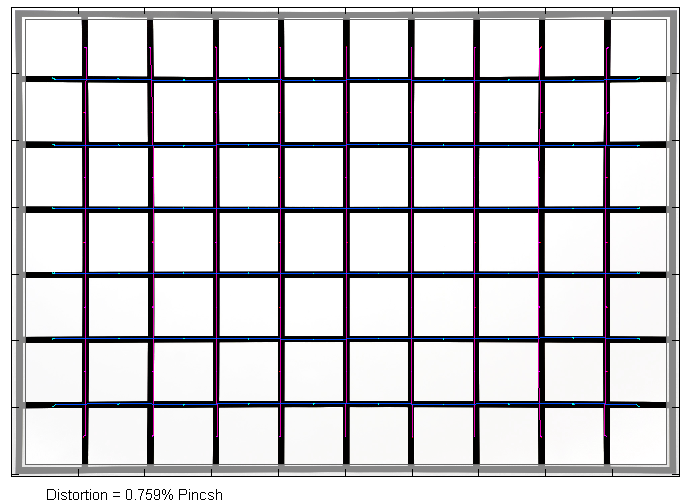|
Sigma AF 60mm f/2.8 DN (Sony E mount) - Review / Lab Test - Analysis |
|
Lens Reviews -
Sony NEX
|
|
Page 2 of 3

Distortion
The Sigma lens produces only a slight amount of pincushion distortion (~0.75%) which is not objectionable in real-life conditions.

Vignetting
The light fall-off is high at f/2.8 (~1.1 f-stops). Stopping down to f/4 reduces the issue to a non-disturbing degree. Beyond it's basically negligible.

MTF (resolution)
The Sigma AF 60mm f/2.8 DN is capable of delivering an outstanding center performance straight from f/2.8. The lens is basically "diffraction-limited" in the image center so stopping down has no effect on the center performance anymore. The outer image regions reach already a very good level at f/2.8 and improve to excellent figures at f/5.6. The overall performance diminishes from f/11 onward - this is a typical diffraction effect and no problem of the lens.
The centering quality of the tested sample was very good and field curvature is not an issue
Please note that the MTF results are not directly comparable across the different systems!
Below is a simplified summary of the formal findings. The chart shows line widths per picture height (LW/PH) which can be taken as a measure for sharpness.
If you want to know more about the MTF50 figures you may check out the corresponding Imatest Explanations
Chromatic Aberrations (CAs)
The Sigma lens produces a low amount of lateral CA (color shadows at harsh contrast transitions) with an average pixel width of ~0.7px at the image borders full open, and less than 0.5px beyond.

Bokeh
One of the primary usage scenarios for a large aperture lens is to separate the main subject from its surroundings. In such an image the quality of the bokeh (out-of-focus blur) is of major significance.
The Sigma AF 60mm f/2.8 DN delivers an good albeit not stellar bokeh. Out-of-focus highlights have a circular shape but the rendition in the discs is somewhat "onion-like" - possibly a side effect from the aspherical element in the optical design. At f/5.6, you can spot the first traces of the aperture shape but this is pretty normal actually.
 The rendition in the critical focus transition zone is pretty smooth with quite nicely blurred edges.
The rendition in the critical focus transition zone is pretty smooth with quite nicely blurred edges.

Bokeh Fringing / Longitudinal Chromatic Aberrations (LoCA)
Bokeh fringing is a common issue with relatively fast glass. It's visible as halos of different colors in out-of-focus areas - magenta (red + blue) in front of the focus point and green beyond.
You can spot traces of fringing at f/2.8 but the issue is basically gone at f/4.
|
Move the mouse cursor over the f-stop marks below to observe the respective LoCAs
|
| f/2.8 |
f/4 |
f/5.6 |
|

|
|